While most members of the AHAC reside in the metropolitan Boston area, the Company has members throughout Massachusetts, and indeed the entire United States. Members are also deployed with the Armed Forces of the U.S. in several overseas locations. Interested applicants may contact the Armory. Download information on "Why Become an Ancient". Applicants must be sponsored by a member and applications submitted by said member. Presidents and Congressional Medal of Honor Recipients have been a part of the Ancient and Honorable Artillery Company of Massachusetts. Read more information below:

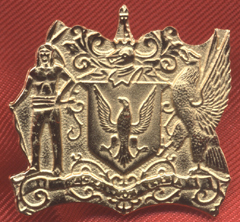
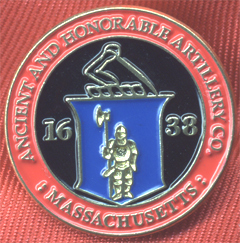
Honorary:
Conferred upon any person, U.S. citizenship not required, with the consent of the Standing Committee and affirmative vote of the Body.
Honorary, ex officio:
Conferred upon the Governor of Massachusetts as Commander-in-Chief
The Adjutant General of the Commonwealth Massachusetts
The Mayor of the City of Boston.
Regular:
Every active member, not qualified as a Life Member, shall be a Regular Member. A member must be of majority and a citizen of the United States. Regular membership is limited to 550 members. Regular Members must be invited to join the Company.
Life Member:
Every active member who has completed the requisite time and service requirements as prescribed by the Rules and Regulations of the Company shall be a Life Member. There is no limit to the number of Life Members.
Right of Descent Members:
Any member of the Company or any citizen of the United States who is a direct descendent member of the Company whose service dates back prior to 1738, upon verification of the line of descent, may apply for membership into the Company. Upon review of the application he may, by vote of the Body, become a non-voting member of the Company. If the ROD member resides outside of New England he is an inactive member.
Non-Resident Member:
Any member whose legal residence is outside of New England may request non-resident status as an inactive member. Although a non-resident member, he shall be liable to a special annual assessment.
Armed Forces Member:
Any member of the Company who is a member of the Armed Forces of the United States or the Commonwealth of Massachusetts serving on active duty for more than 90 consecutive days may apply for inactive status within the Company.
Past Commanders:
After a member has served as Captain Commanding of the Company he is considered a Past Commander and is accorded all the courtesies of his rank and status. The first Captain Commanding and the first Past Commander was Captain Robert Keayne, founder of this Company in 1638. Past Commanders wear mini gorget (see right).

When President Monroe visited Boston in 1817, he was received with great enthusiasm and was provided with a military escort. It was on this visit that President Monroe was enrolled a member of the A&HAC on 30 June 1817 and was then elected an Honorary Member, the highest distinction which the Company can bestow.

In 1882, The Fall Field Day Tour of Duty was celebrated in Marshfield on account of the centennial celebration of the birthday of Daniel Webster. The Company had been invited to do escort duty to the President of the United States. It was on the occasion of this pleasant duty that President Arthur was enrolled a member of the A&HAC on 12 Ocotber 1882, and was then elected an Honorary Member, the highest distinction which the Company can bestow.
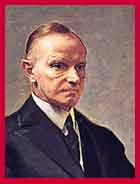
As Governor of Massachusetts, Calvin Coolidge had been the Commander-in-Chief of the A&HAC. During his administration he won the high regard and admiration of all thoughtful men and women. H stood firmly for the principles of our Company had advocated during its existence. For these reasons, President Coolidge was enrolled as a member of A&HAC on 5 May 1924 and was then elected an Honorary Member.

John F. Kennedy was enrolled a member of the A&HAC on 16 April 1956 and was elected an Honorary Member on 3 April 1961. On the occasion of his Inaugural as President on 20 January 1961, seventy-five officers and members proudly participated in the Inaugural Parade in Washington, DC.
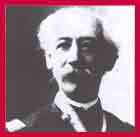
Rank and organization: Private, Company D, 13th Massachusetts Infantry. Place and date. At Fredericksburg, Va., 13 December 1862. Entered service at:------. Born 2 February 1836, Waltham, Mass. Date of issue: 1898. Citation: A wounded and helpless comrade, having been left on the skirmish line, this soldier voluntarily returned to the front under a severe fire and carried the wounded man to a place of safety.
A portriat of Maynard hangs in the Captain's Quarters. Maynard's Gravesite Mount Feake Cemetery, Prospect St, Waltham, MA (wreath laying ceremony each May)
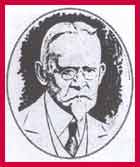
Rank and organization: Corporal, Company F, 7th Massachusetts Infantry. Place and date: At Fredericksburg, Va., 3 May 1863. Entered service at:------. Birth: Carver, Mass. Date of issue: 24 August 1896. Citation: Though severely wounded and in face of a deadly fire from the enemy at short range, he rushed bravely forward and was among the first to enter the enemy's works on the crest of Marye's Heights and helped to plant his regimental colors there. Maxham Gravesite Mayflower Hill Cemetery Taunton
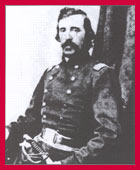
In command of a detachment of 100 men, he conducted a reconnaissance for two days, baffling and beating back an attacking force of more than 1,000 confederates, and regained his transport without loss. Colonel Hasseltine served as a member of the A&HAC for many years before his death in Newtonville, Massachusetts, 17 February 1916 at the age of 83 years. Hasseltine Gravesite Wyoming Cemetery Melrose

Vermont Infantry. Place and date: At Petersburg, Va., 2 April 1865. Entered service at: Woodstock, Vt. Birth: Pomfret, Vt. Date of issue: 30 September 1893. Citation: When the lines were wavering from the well-directed fire of the enemy, this officer, acting adjutant of the regiment, sprang forward, and with encouraging words cheered the soldiers on and, although dangerously wounded, refused to leave the field until the enemy's works were taken. Hawkins: Gravesite Lindenwood Cemetery Stoneham

Rank and organization: Commander, U.S. Navy, U.S.S. Tirante. Place and date: Harbor of Quelpart Island, off the coast of Korea, 14 April 1945. Entered service at. Virginia. Born: 27 July 1913, Richmond, Virginia. Other Navy awards: Navy Cross, Silver Star with 1 Gold Star. Citation: For conspicuous gallantry and intrepidity at the risk of his life above and beyond the call of duty as commanding officer of the U.S.S. Tirante during the first war patrol of that vessel against enemy Japanese surface forces in the harbor of Quelpart Island, off the coast of Korea, on 14 April 1945. With the crew at surface battle stations, Commander (then Lieutenant Commander) Street approached the hostile anchorage from the south within 1,200 yards of the coast to complete a reconnoitering circuit of the island. Leaving the 10-fathom curve far behind he penetrated the mined and shoal-obstructed waters of the restricted harbor despite numerous patrolling vessels and in defiance of 5 shore-based radar stations and menacing aircraft. Prepared to fight it out on the surface if attacked, Commander Street went into action, sending 2 torpedoes with deadly accuracy into a large Japanese ammunition ship and exploding the target in a mountainous and blinding glare of white flames. With the Tiranle instantly spotted by the enemy as she stood out plainly in the flare of light, he ordered the torpedo data computer set up while retiring and fired his last 2 torpedoes to disintegrate in quick succession the leading frigate and a similar flanking vessel. Clearing the gutted harbor at emergency full speed ahead, he slipped undetected along the shoreline, diving deep as a pursuing patrol dropped a pattern of depth charges at the point of submergence. His illustrious record of combat achievement during the first war patrol of the Tirante characterizes Comdr. Street as a daring and skilled leader and reflects the highest credit upon himself, his valiant command, and the U.S. Naval Service.
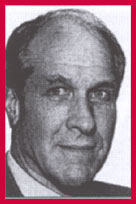

Sergeant MacGillivary led a squad near Woelfling, France on I January 1945 when his unit moved forward in darkness to meet the threat of a breakthrough by elements of the 17th German Panzer Grenadier Division. Assigned to protect the left flank, he discovered hostile troops digging in. As he reported this information, several German machine guns opened fire, stopping the American advance. Knowing the position of the enemy, Sergeant MacGillivary volunteered to knock out one of the guns while another company closed in from the right to assault the remaining strong points. He circled to the left through woods and snow, carefully worked his way to the emplacement and shot the two camouflaged gunners at a range of three feet, as other enemy forces withdrew. Early in the afternoon of the same day, Sergeant MacGillivary was dispatched on reconnaissance and found that Company I was being opposed by about six machine guns reinforcing a company of fanatically fighting Germans. His unit began an attack but was pinned down by furious automatic and small arms fire. With a clear idea of where the enemy guns were placed, he voluntarily embarked on a lone combat patrol. Skillfully taking advantage of all available cover, he stalked the enemy, reached a hostile machine gun and blasted its crew with a grenade. He picked up a sub-machine gun from the battlefield and pressed an to within ten yards of another machine gun, where the enemy crew discovered him and feverishly tried to swing their weapon into line to cut him down. He charged ahead, jumped into the midst of the Germans and killed them with several bursts. Without hesitation, he moved on to still another machine gun, creeping, crawling and rushing from tree to tree, until close enough to toss a grenade into the emplacement and close with its defenders. His dispatched this crew also, but was himself seriously wounded. Through his indomitable fighting spirit, great initiative and utter disregard for personal safety in the face of powerful enemy resistance, Sergeant MacGillivary destroyed four hostile machine guns, and immeasurably helped his company to continue on its mission with minimum casualties." Sergeant Charles A. MacGillivary was enrolled as a member of the A&HAC on 6 April 1992. He thus became the seventh member to have received the nation's highest military honor.

Rank and organization: Lieutenant Commander, U.S. Navy, River Assault Division 152. place and date: Ong Muong Canal, Kien Hoa province, Republic of Vietnam, 15 June 1969. Entered service at: Boston, Mass. Born: 13 May 1939, Boston, Mass. Citation: For conspicuous gallantry and intrepidity at the risk of his life above and beyond the call of duty in the afternoon while serving as commander of River Assault Division 152 during combat operations against enemy aggressor forces. Lt. Comdr. (then Lt.) Kelley was in charge of a column of 8 river assault craft which were extracting 1 company of U.S. Army infantry troops on the east bank of the Ong Muong Canal in Kien Hoa province, when 1 of the armored troop carriers reported a mechanical failure of a loading ramp. At approximately the same time, Viet Cong forces opened fire from the opposite bank of the canal. After issuing orders for the crippled troop carrier to raise its ramp manually, and for the remaining boats to form a protective cordon around the disabled craft, Lt. Comdr. Kelley realizing the extreme danger to his column and its inability to clear the ambush site until the crippled unit was repaired, boldly maneuvered the monitor in which he was embarked to the exposed side of the protective cordon in direct line with the enemy's fire, and ordered the monitor to commence firing. Suddenly, an enemy rocket scored a direct hit on the coxswain's flat, the shell penetrating the thick armor plate, and the explosion spraying shrapnel in all directions. Sustaining serious head wounds from the blast, which hurled him to the deck of the monitor, Lt. Cmdr. Kelley disregarded his severe injuries and attempted to continue directing the other boats. Although unable to move from the deck or to speak clearly into the radio, he succeeded in relaying his commands through 1 of his men until the enemy attack was silenced and the boats were able to move to an area of safety. Lt. Comdr. Kelley's brilliant leadership, bold initiative, and resolute determination served to inspire his men and provide the impetus needed to carry out the mission after he was medically evacuated by helicopter. His extraordinary courage under fire, and his selfless devotion to duty sustain and enhance the finest traditions of the U.S. Naval Service.
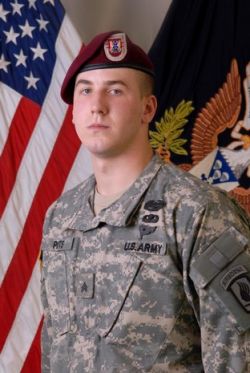
Sergeant Ryan M. Pitts distinguished himself by extraordinary acts of heroism at the risk of his life above and beyond the call of duty while serving as a Forward Observer in 2d Platoon, Chosen Company, 2d Battalion (Airborne), 503d Infantry Regiment, 173d Airborne Brigade during combat operations against an armed enemy at Vehicle Patrol Base Kahler in the vicinity of Wanat Village, Kunar Province, Afghanistan on July 13, 2008. Early that morning, while Sergeant Pitts was providing perimeter security at Observation Post Topside, a well-organized Anti-Afghan Force consisting of over 200 members initiated a close proximity sustained and complex assault using accurate and intense rocket-propelled grenade, machine gun and small arms fire on Wanat Vehicle Patrol Base. An immediate wave of rocket-propelled grenade rounds engulfed the Observation Post wounding Sergeant Pitts and inflicting heavy casualties. Sergeant Pitts had been knocked to the ground and was bleeding heavily from shrapnel wounds to his arm and legs, but with incredible toughness and resolve, he subsequently took control of the Observation Post and returned fire on the enemy. As the enemy drew nearer, Sergeant Pitts threw grenades, holding them after the pin was pulled and the safety lever was released to allow a nearly immediate detonation on the hostile forces. Unable to stand on his own and near death because of the severity of his wounds and blood loss, Sergeant Pitts continued to lay suppressive fire until a two-man reinforcement team arrived. Sergeant Pitts quickly assisted them by giving up his main weapon and gathering ammunition all while continually lobbing fragmentary grenades until these were expended. At this point, Sergeant Pitts crawled to the northern position radio and described the situation to the Command Post as the enemy continued to try and isolate the Observation Post from the main Patrol Base. With the enemy close enough for him to hear their voices and with total disregard for his own life, Sergeant Pitts whispered in the radio situation reports and conveyed information that the Command Post used to provide indirect fire support. Sergeant Pitts' courage, steadfast commitment to the defense of his unit and ability to fight while seriously wounded prevented the enemy from overrunning the Observation Post and capturing fallen American soldiers, and ultimately prevented the enemy from gaining fortified positions on higher ground from which to attack Wanat Vehicle Patrol Base. Sergeant Ryan M. Pitts' extraordinary heroism and selflessness above and beyond the call of duty are in keeping with the highest traditions of military service and reflect great credit upon himself, Company C, 2d Battalion (Airborne), 503d Infantry Regiment, 173d Airborne Brigade and the United States Army.
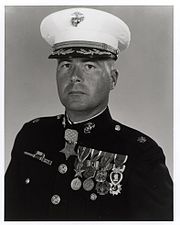
For conspicuous gallantry and intrepidity at the risk of his life above and beyond the call of duty. When the company was suddenly pinned down by a hail of extremely accurate enemy fire and was quickly separated from the remainder of the battalion by over 500 meters of open and fire-swept ground, and casualties mounted rapidly. Lt. Barnum quickly made a hazardous reconnaissance of the area, seeking targets for his artillery. Finding the rifle company commander mortally wounded and the radio operator killed, he, with complete disregard for his safety, gave aid to the dying commander, then removed the radio from the dead operator and strapped it to himself. He immediately assumed command of the rifle company, and moving at once into the midst of the heavy fire, rallying and giving encouragement to all units, reorganized them to replace the loss of key personnel and led their attack on enemy positions from which deadly fire continued to come. His sound and swift decisions and his obvious calm served to stabilize the badly decimated units and his gallant example as he stood exposed repeatedly to point out targets served as an inspiration to all. Provided with 2 armed helicopters, he moved fearlessly through enemy fire to control the air attack against the firmly entrenched enemy while skillfully directing 1 platoon in a successful counterattack on the key enemy positions. Having thus cleared a small area, he requested and directed the landing of 2 transport helicopters for the evacuation of the dead and wounded. He then assisted in the mopping up and final seizure of the battalion's objective. His gallant initiative and heroic conduct reflected great credit upon himself and were in keeping with the highest traditions of the Marine Corps and the U.S. Naval Service.
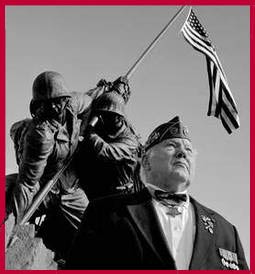
Rank and organization: Private First Class, U.S. Marine Corps Reserve, 1st Battalion, 26th Marines, 5th Marine Division. Place and date: Iwo Jima, Volcano Islands, 20 February 1945. Entered service at: Norfolk, Va. Born: 14 February 1928, Plymouth, N.C. Citation: For conspicuous gallantry and intrepidity at the risk of his life above and beyond the call of duty while serving with the 1st Battalion, 26th Marines, 5th Marine Division, during action against enemy Japanese forces on Iwo Jima, Volcano Islands, 20 February 1945. While creeping through a treacherous, twisting ravine which ran in close proximity to a fluid and uncertain frontline on D-plus-1 day, Pfc. Lucas and 3 other men were suddenly ambushed by a hostile patrol which savagely attacked with rifle fire and grenades. Quick to act when the lives of the small group were endangered by 2 grenades which landed directly in front of them, Pfc. Lucas unhesitatingly hurled himself over his comrades upon 1 grenade and pulled the other under him, absorbing the whole blasting forces of the explosions in his own body in order to shield his companions from the concussion and murderous flying fragments. By his inspiring action and valiant spirit of self-sacrifice, he not only protected his comrades from certain injury or possible death but also enabled them to rout the Japanese patrol and continue the advance. His exceptionally courageous initiative and loyalty reflect the highest credit upon Pfc. Lucas and the U.S. Naval Service.